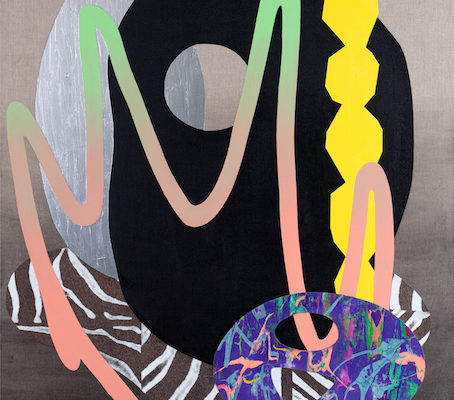Kurt Beers, director of the London gallery Beers Contemporary, has volunteered to answer the question, scouting the most promising artists in the field. His ambitious endeavor culminated with “100 Painters of Tomorrow,” a project encompassing a book, that was launched at Christie’s London last night, and two collective exhibitions, which will open in New York on November 7, and in London on November 28.
Beers sent out an international open call in January 2013, inviting painters from all over the world to submit their work for consideration. He received a staggering 4,300 applications from 105 countries, which were then assessed by an international jury featuring key players of the art world—including painter Cecily Brown, ICA director Gregor Muir, art collector and patron Valeria Napoleone, and art critic Barry Schwabsky.
“The open call process was demanding, but we really wanted to make sure we were covering the whole spectrum exhaustively, in terms of nationality, age, and style,” Beers told artnet News. “We encouraged applications from self-taught artists, but also reached out to 50 of the best art schools from all over the world to ask them to refer their best students to us. The only criteria we imposed were that the candidates had to be working primarily with paint, and that they could not be established painters. We were absolutely thrilled by the huge amount of good and imaginative work that we saw,” he explained.
The 100 painters that were finally selected hail from 37 countries, and they certainly offer a wide perspective on the state of painting today, from geometric abstraction to cartoonish figuration and everything in between, including a more sculptural approach to the discipline.
The finalists include a few better-known names with gallery representation, like Ryan Mosley, Tamara K.E., Cornelia Baltes, and Tomory Dodge. But the majority are artists whose names are starting to make waves in different parts of the word, like the Russian artist Yelena Popova, the Spanish Gorka Mohamed, the Mexican Julieta Aguinaco, and the Lithuanian Kristina Alisauskaite.
“Being part of a project like this, which understands painting as something fresh and relevant, is hugely rewarding,” Mohamed told artnet News. “It validates your work and offers a phenomenal opportunity to showcase it. Next week, I will be showing in New York for the first time as part of the collective exhibition, and the book is a great permanent record of my work,” he said.
Painting—dead, resuscitated and now, seemingly, alive and kicking—has been the subject of much debate in the contemporary art world for years. The advent of new technologies, such as digital photography and animation, has put the historical medium in a complicated place, with many contemporary painters inhabiting creative positions that oscillate between nostalgia, cynicism, and punkish buffoonery.
So, why is painting still relevant? artnet News asked Beers.
“We have been using painting to tell stories of time, place, and history for millennia, and we will continue to do so for many years,” he replied. “Painting is unique; just as every painting is a unique thing. And its magic—unlike that of photography—remains absolutely unchallenged.”
